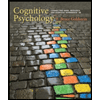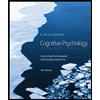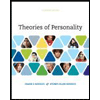Violent_Crimes-1701635609.6891491.docx656cf11f28bfd27376
pdf
keyboard_arrow_up
School
Kenyatta University *
*We aren’t endorsed by this school
Course
5
Subject
Psychology
Date
Nov 24, 2024
Type
Pages
13
Uploaded by Kamblossi
Wright College
usher
BMC
TTTTTT
user user
Document Details
Submission ID
trn:oid:::1:2771739761
Submission Date
Dec 4, 2023, 1:50 AM CST
Download Date
Dec 4, 2023, 1:51 AM CST
File Name
Violent_Crimes-1701635609.6891491.docx656cf11f28bfd27376.docx
File Size
42.6 KB
11 Pages
2,134 Words
14,367 Characters
Page 1 of 13 - Cover Page
Submission ID trn:oid:::1:2771739761
Page 1 of 13 - Cover Page
Submission ID trn:oid:::1:2771739761
How much of this submission has been generated by AI?
0%
of qualifying text in this submission has been determined to be
generated by AI.
Caution: Percentage may not indicate academic misconduct. Review required.
It is essential to understand the limitations of AI detection before making decisions
about a student's work.
We encourage you to learn more about Turnitin's
AI detection
capabilities before using the tool.
Frequently Asked Questions
What does the percentage mean?
The percentage shown in the AI writing detection indicator and in the AI writing report is the amount of qualifying text within the
submission that Turnitin's AI writing detection model determines was generated by AI.
Our testing has found that there is a higher incidence of false positives when the percentage is less than 20. In order to reduce the
likelihood of misinterpretation, the AI indicator will display an asterisk for percentages less than 20 to call attention to the fact that
the score is less reliable.
However, the final decision on whether any misconduct has occurred rests with the reviewer/instructor. They should use the
percentage as a means to start a formative conversation with their student and/or use it to examine the submitted assignment in
greater detail according to their school's policies.
How does Turnitin's indicator address false positives?
Our model only processes qualifying text in the form of long-form writing. Long-form writing means individual sentences contained in paragraphs that make up a
longer piece of written work, such as an essay, a dissertation, or an article, etc. Qualifying text that has been determined to be AI-generated will be highlighted blue
on the submission text.
Non-qualifying text, such as bullet points, annotated bibliographies, etc., will not be processed and can create disparity between the submission highlights and the
percentage shown.
What does 'qualifying text' mean?
Sometimes false positives (incorrectly flagging human-written text as AI-generated), can include lists without a lot of structural variation, text that literally repeats
itself, or text that has been paraphrased without developing new ideas. If our indicator shows a higher amount of AI writing in such text, we advise you to take that
into consideration when looking at the percentage indicated.
In a longer document with a mix of authentic writing and AI generated text, it can be difficult to exactly determine where the AI writing begins and original writing
ends, but our model should give you a reliable guide to start conversations with the submitting student.
Disclaimer
Our AI writing assessment is designed to help educators identify text that might be prepared by a generative AI tool. Our AI writing assessment may not always be accurate (it may misidentify
both human and AI-generated text) so it should not be used as the sole basis for adverse actions against a student. It takes further scrutiny and human judgment in conjunction with an
organization's application of its specific academic policies to determine whether any academic misconduct has occurred.
Page 2 of 13 - AI Writing Overview
Submission ID trn:oid:::1:2771739761
Page 2 of 13 - AI Writing Overview
Submission ID trn:oid:::1:2771739761
.
1
Violent Crimes in Canada
Student’s Name
Id
Course
Instructor
Date
Page 3 of 13 - AI Writing Submission
Submission ID trn:oid:::1:2771739761
Page 3 of 13 - AI Writing Submission
Submission ID trn:oid:::1:2771739761
Your preview ends here
Eager to read complete document? Join bartleby learn and gain access to the full version
- Access to all documents
- Unlimited textbook solutions
- 24/7 expert homework help
.
2
Violent Crimes in Canada
Violent crime represents a significant threat to societal welfare. In order to develop
effective prevention and intervention initiatives, it is crucial to thoroughly examine and
understand the various origins of violent criminal behavior. Given Canada's culturally diverse
and inclusive nature, investigating the complex factors behind violent offenses is especially
imperative. As Canadian demographics and social dynamics evolve over time, the necessity for
research-based violence prevention continues to escalate. An examination into the root causes of
brutality can enhance efforts to promote nonviolence within communities. This analysis aims to
academically explore four key contributing agents to interpersonal violence that were highlighted
in previous course material: personal traits, family dysfunction, evolutionary factors, and
substance abuse. A comprehensive investigation into how these factors may motivate violent acts
can potentially inform constructive solutions. Canada's diversity presents unique challenges in
responding to violence, emphasizing the growing need for evidence-based preventative measures
and rehabilitation programs. Further scholarly research focused on identifying the origins of
criminal violence is required to support the development of effective strategies that foster social
stability and security across all communities. A clearer understanding of violence causality can
help inhibit the escalation of brutality in the country.
General Statistics of Violent Crimes in Canada
In 2021, police-reported over 2 million Criminal Code violations in Canada, excluding traffic
offenses, representing an increase of approximately 25,500 cases relative to 2020 (Moreau,
2022). This reflects a 1% rise in the national crime rate, diverging from the 9% decline observed
in the previous year (Moreau, 2022). Specifically, while the violent crime rate rose by 5% during
Page 4 of 13 - AI Writing Submission
Submission ID trn:oid:::1:2771739761
Page 4 of 13 - AI Writing Submission
Submission ID trn:oid:::1:2771739761
.
3
this period, the property crime rate underwent a minor 1% decrease (Moreau, 2022). However,
the Crime Severity Index, which accounts for both the prevalence and severity of reported
offenses, remained relatively stable at 73.7 in 2021 compared to 73.9 in 2020 (Moreau, 2022).
Further analysis of violent crime data in major Canadian cities shows alarming escalations.
Vancouver recorded 4,739 violent crime incidents in 2022, the highest annual count in over a
decade, surpassing the prior record set in 2013 (Government of Canada, 2023). Detailed
examination of figures over recent years illuminates a downward trajectory in violent offenses
from 2014-2016, followed by steady increases up to the unprecedented peak in 2022
(Government of Canada, 2023). These trends signify deeply concerning violence elevations in
major urban centers. Additionally, the national Violent Crime Severity Index grew by 5% in
2021, primarily attributed to a sizeable 18% surge in Level 1 sexual assaults (Moreau, 2022).
Across Canada, 788 homicides were reported, a 3% increase over the previous year, with the
national homicide rate climbing from 2.00 per 100,000 residents in 2020 to 2.06 in
2021(Moreau, 2022). Similarly, Vancouver's figures showcase a persistent escalation in violent
crime since 2019, hitting its highest point in 2022 with the city's Violent Crime Severity Index
reaching its highest level since 2007 (Government of Canada, 2023). This spike included
increased rates of robbery (+15%), extortion (+39%), homicide (+8%), and Level 1 sexual
assault (+3%) (Government of Canada, 2023). These statistical patterns at both the national and
Vancouver levels serve as a critical foundation for a more in-depth exploration of the underlying
root causes behind the surge in violent crime.
Roots of Violent Crimes
An individual's personal traits, which encompass the stability of their patterns of
thinking, feeling, and behavior, are a key aspect in understanding the origins of violent conduct.
Page 5 of 13 - AI Writing Submission
Submission ID trn:oid:::1:2771739761
Page 5 of 13 - AI Writing Submission
Submission ID trn:oid:::1:2771739761
.
4
These traits manifest in four main combinations: high control-high affiliation, low control-low
affiliation, high control-low affiliation, and low control-high affiliation. Aggression, closely tied
to violent crime, extends beyond physical violence to include actions meant to harm people,
animals, or property. Neuroticism, one such trait, has been significantly linked to aggression,
with studies showing a positive correlation between neuroticism and aggressive actions (Jiang et
al., 2022). People with high neuroticism experience negative emotions intensely, potentially
fostering aggressive tendencies. In contrast, agreeableness demonstrates a negative relationship
with aggression since highly agreeable people tend to be cooperative and avoid conflict, making
violence less likely. Statistics further reinforce the connection between personality and violence:
Salters (2019) found heightened rates of certain disorders, especially borderline personality
disorder, among both male and female violence perpetrators. However, a diagnosis alone does
not necessarily indicate an increased risk for violence. Moreover, a study by Tharshini et al.
(2021) on violent offenders with substance abuse issues found distinctive traits characterized by
high neuroticism, low agreeableness, and low conscientiousness. This connection of traits
highlights the complex nature of violent behavior. While understanding personal characteristics
is key to unraveling the origins of violence, it is critical to recognize that they are just one
element within a wide range of contributing factors. As such, in exploring personality traits as a
root cause of violent crime, this perspective can inform targeted prevention and intervention
approaches that acknowledge the combination of factors collectively shaping violent behavior.
Substance abuse is a major root cause of violent crime, influencing the likelihood of
criminal involvement, especially violent offenses. The use of substances like alcohol, heroin, and
cocaine markedly increases the risk of engaging in criminal activities, with heightened
susceptibility to violence (Zhong et al., 2020). The connection between substance use and
Page 6 of 13 - AI Writing Submission
Submission ID trn:oid:::1:2771739761
Page 6 of 13 - AI Writing Submission
Submission ID trn:oid:::1:2771739761
Your preview ends here
Eager to read complete document? Join bartleby learn and gain access to the full version
- Access to all documents
- Unlimited textbook solutions
- 24/7 expert homework help
.
5
violence is characterized by various factors, including exposure to violence, co-occurring mental
disorders, and social determinants (Murphy, 2022). Statistics by the Canadian Centre on
Substance Use and Addiction highlight the strong association between substance abuse and
committing violent crimes, with over 40% of violent crimes being attributed to substance abuse
(Canadian Centre on Substance Use and Addiction, 2021). Addressing substance abuse is crucial
for curbing violent crime incidence and mitigating associated social and economic costs (Vitelli,
2018).
Ineffective families, characterized by inconsistent parenting, familial problems, and
added stressors, significantly contribute to the development of violent tendencies in individuals.
Children raised in such settings face heightened risks of engaging in criminal activities in their
youth and adulthood. Mwangangi (2019) highlights the link between adverse childhood family
psychosocial factors and the genesis of criminal conduct in children. Parents who instill
antisocial perspectives and behaviors in kids can perpetuate those attitudes into adulthood. This
connection is supported by Frisell et al. (2010), who found a pronounced aggregation of
interpersonal violence among first-degree relatives. These findings prove that dysfunctional
family settings' have a substantial impact on violent crime prevalence. Because families critically
shape individual behaviors, initiatives promoting effective family structures may prove
instrumental in disrupting violence cycles and decreasing violent crime rates in communities.
Evolutionary factors and human instinct play a major role in violent crime. The field of
evolutionary psychology offers valuable insight into the origins of violence (Gottschalk & Ellis,
2009). It suggests humans have an evolutionary history of violence, where violence served as a
context-dependent strategy that may have benefitted ancestors in certain situations (Goetz,
2010). For example, aggression in animals facilitates obtaining food, competing for mates, and
Page 7 of 13 - AI Writing Submission
Submission ID trn:oid:::1:2771739761
Page 7 of 13 - AI Writing Submission
Submission ID trn:oid:::1:2771739761
.
6
protecting territory (Gottschalk & Ellis, 2009). Natural selection favored these aggressive
behaviors because they enabled the reproduction of genes in violent animals (Gottschalk & Ellis,
2009). Genetic predisposition is another key factor as shown in a study by Hogenboom (2014) in
which genetic analysis of 900 offenders revealed two genes linked to repeat violent crime. Those
with the genes were 13 times more likely to have a history of recurrent violence further
demonstrating the evolutionary underpinnings of violent crime (Hogenboom, 2014).
Solutions
Tackling violent conduct linked to individual traits necessitates a multifaceted approach
combining psychological help, education, and community backing. Implementing targeted
counseling programs for people with high neuroticism or certain personality disorders can enable
self-awareness and emotion control. Educational efforts centered on social-emotional learning in
schools can nurture positive character and conflict resolution, building agreeableness and
reducing violent tendencies (Brown et al., 2017). Specifically, counseling programs focused on
cognitive behavioral therapy, dialectical behavior therapy, and schema therapy have shown
efficacy in treating maladaptive personality patterns underlying aggression and violence.
Incorporating social-emotional educational modules on empathy, impulse control, and anger
management as early as elementary school can help shape neural pathways to reinforce positive
behavior. Community backing can provide mentorship programs through nonprofits and faith-
based organizations to model nonviolent conflict resolution and meaningfully channel aggressive
tendencies into sports, activism, and art. A collaborative approach is key, as each component
reinforces the others to promote systemic change.
To mitigate evolutionary and instinctual drivers of violence, a targeted intervention
approach can be implemented, integrating education, genetic counseling, and community
Page 8 of 13 - AI Writing Submission
Submission ID trn:oid:::1:2771739761
Page 8 of 13 - AI Writing Submission
Submission ID trn:oid:::1:2771739761
.
7
engagement. Educational programs incorporating evolutionary psychology concepts can raise
awareness of aggression's evolutionary origins, promoting self-understanding and emotion
regulation (Brown et al., 2017). Genetic counseling services can identify people prone to
violence through genetic screening, focusing especially on genes like MAOA and CDH13 tied to
repeat offenses. Early detection enables proactive support, counseling, and guidance for at-risk
individuals, emphasizing responsible choices and conflict resolution. Community initiatives like
support groups and awareness campaigns can further disrupt violence cycles by building a sense
of collective duty and tackling factors underlying aggression.
On the other hand, violence arising from dysfunctional families requires focused efforts
to improve family dynamics and positive parenting. Comprehensive family counseling programs,
accessible to both parents and children, can provide support to address issues fueling family
problems and poor parenting (Brown et al., 2017). Furthermore, community-based services
offering resources like parenting workshops, mentoring, and mental health aid can also bolster
families facing adversity.
Effectively addressing violent crime rooted in substance abuse requires a comprehensive
approach including prevention, treatment, and community support. Widespread public awareness
campaigns educating people on the risks of addiction, particularly the increased likelihood of
violence, can serve as a preventative measure. Enhancing access to evidence-based treatment
programs and rehab services is also critical to ensure those struggling with addiction receive
adequate support to break cycles of substance-fueled violence (Brown et al., 2017). Additionally,
policy interventions emphasizing rehabilitation rather than incarceration for nonviolent drug
offenses can redirect individuals toward treatment instead of perpetuating substance-related
crime patterns.
Page 9 of 13 - AI Writing Submission
Submission ID trn:oid:::1:2771739761
Page 9 of 13 - AI Writing Submission
Submission ID trn:oid:::1:2771739761
Your preview ends here
Eager to read complete document? Join bartleby learn and gain access to the full version
- Access to all documents
- Unlimited textbook solutions
- 24/7 expert homework help
.
8
Conclusion
Confronting the complex issue of violence in Canada requires a thorough investigation of
its multifaceted origins. Detailed analysis of statistics and patterns points to four key drivers:
individual personality traits, human evolutionary history, dysfunctional family environments, and
substance addiction. Targeted solutions must address the root causes of the problem by
addressing the specific contributory factors. Case in point, transforming maladaptive traits
demands psychological counseling, educational programs focused on socioemotional skills, and
community support systems to nurture conflict resolution abilities. On the other hand, the means
of overcoming evolutionary predispositions begins with exercising greater public awareness,
genetic screening, and responsible decision-making around inherent aggressive impulses. It is
also important to reinforce family bonds through reliance on accessible family therapy, parenting
education, community services, and skill-building to establish stability. Finally, curbing
addiction-fueled crimes needs comprehensive models emphasizing rehabilitation through public
awareness campaigns, evidence-based treatment, alternative sentencing policies, and community
reintegration programs. While distinct in nature, these multifaceted solutions have potential, if
enacted collectively, to disrupt systemic cycles of violence.
Page 10 of 13 - AI Writing Submission
Submission ID trn:oid:::1:2771739761
Page 10 of 13 - AI Writing Submission
Submission ID trn:oid:::1:2771739761
.
9
References
Brown, G. P., Hoffman, R., & Siegel, L. J. (2017).
CRIM: Introduction to Criminology,.
Nelson
Education.
Canadian Centre on Substance Use and Addiction. (2021).
Proportion of Crimes Associated with
Substance Use
. Publications.gc.ca.
https://publications.gc.ca/collections/collection_2021/scc-csc/PS84-188-2021-eng.pdf
Frisell, T., Lichtenstein, P., & Långström, N. (2010). Violent crime runs in families: a total
population study of 12.5 million individuals.
Psychological Medicine
,
41
(1), 97–105.
https://doi.org/10.1017/s0033291710000462
Gabbey, A. E., & Raypole, C. (2013).
Aggressive Behavior | Definition & Patient Education
.
Healthline. https://www.healthline.com/health/aggressive-behavior
Goetz, A. T. (2010). The evolutionary psychology of violence.
Psicothema
,
22
(1), 15–21.
https://pubmed.ncbi.nlm.nih.gov/20100422/
Gottschalk, M., & Ellis, G. (2009). Evolutionary and Genetic Explanations of Violent Crime. In
Cause of Crime
. Sage Publications. https://www.sagepub.com/sites/default/files/upm-
binaries/26264_4sc.pdf
Government of Canada, S. C. (2023, July 27).
The Daily — Police-reported crime statistics in
Canada, 2022
. Www150.Statcan.gc.ca. https://www150.statcan.gc.ca/n1/daily-
quotidien/230727/dq230727b-eng.htm
Hogenboom, M. (2014, October 28). Two genes linked with violent crime.
BBC News
.
https://www.bbc.com/news/science-environment-29760212
Page 11 of 13 - AI Writing Submission
Submission ID trn:oid:::1:2771739761
Page 11 of 13 - AI Writing Submission
Submission ID trn:oid:::1:2771739761
.
10
Jiang, X., Li, X., Dong, X., & Wang, L. (2022). How the Big Five personality traits related to
aggression from perspectives of the benign and malicious envy.
BMC Psychology
,
10
(1).
https://doi.org/10.1186/s40359-022-00906-5
Moreau, G. (2022, August 2).
Police-reported crime statistics in Canada, 2021
.
Www150.Statcan.gc.ca. https://www150.statcan.gc.ca/n1/pub/85-002-
x/2022001/article/00013-eng.htm
Murphy, E. (2022, June 15).
Alcohol, Drugs and Crime: What’s the connection? | recovered.org
.
Recovered. https://recovered.org/addiction/alcohol-drugs-and-crime
Mwangangi, R. K. (2019). The Role of Family in Dealing with Juvenile Delinquency.
Open
Journal of Social Sciences
,
7
(3), 52–63. https://doi.org/10.4236/jss.2019.73004
Salters, K. (2019).
Is There a Prevalence of Violence With Borderline Personality?
(A. Morin,
Ed.). Verywell Mind. https://www.verywellmind.com/borderline-personality-and-
violence-425192
Tharshini, N. K., Ibrahim, F., Kamaluddin, M. R., Rathakrishnan, B., & Nasir, N. C. M. (2021).
The Link between Individual Personality Traits and Criminality: A Systematic Review.
International Journal of Environmental Research and Public Health
,
18
(16), 8663.
https://doi.org/10.3390/ijerph18168663
Vitelli, R. (2018).
How Are Substance Abuse and Violence Related?
Psychology Today.
https://www.psychologytoday.com/us/blog/media-spotlight/201803/how-are-substance-
abuse-and-violence-related
Zhong, S., Yu, R., & Fazel, S. (2020). Drug Use Disorders and Violence: Associations With
Individual Drug Categories.
Epidemiologic Reviews
,
42
(1).
Page 12 of 13 - AI Writing Submission
Submission ID trn:oid:::1:2771739761
Page 12 of 13 - AI Writing Submission
Submission ID trn:oid:::1:2771739761
Your preview ends here
Eager to read complete document? Join bartleby learn and gain access to the full version
- Access to all documents
- Unlimited textbook solutions
- 24/7 expert homework help
.
11
Page 13 of 13 - AI Writing Submission
Submission ID trn:oid:::1:2771739761
Page 13 of 13 - AI Writing Submission
Submission ID trn:oid:::1:2771739761
Related Documents
Recommended textbooks for you

Ciccarelli: Psychology_5 (5th Edition)
Psychology
ISBN:9780134477961
Author:Saundra K. Ciccarelli, J. Noland White
Publisher:PEARSON

Cognitive Psychology
Psychology
ISBN:9781337408271
Author:Goldstein, E. Bruce.
Publisher:Cengage Learning,

Introduction to Psychology: Gateways to Mind and ...
Psychology
ISBN:9781337565691
Author:Dennis Coon, John O. Mitterer, Tanya S. Martini
Publisher:Cengage Learning

Psychology in Your Life (Second Edition)
Psychology
ISBN:9780393265156
Author:Sarah Grison, Michael Gazzaniga
Publisher:W. W. Norton & Company

Cognitive Psychology: Connecting Mind, Research a...
Psychology
ISBN:9781285763880
Author:E. Bruce Goldstein
Publisher:Cengage Learning

Theories of Personality (MindTap Course List)
Psychology
ISBN:9781305652958
Author:Duane P. Schultz, Sydney Ellen Schultz
Publisher:Cengage Learning
Recommended textbooks for you
 Ciccarelli: Psychology_5 (5th Edition)PsychologyISBN:9780134477961Author:Saundra K. Ciccarelli, J. Noland WhitePublisher:PEARSON
Ciccarelli: Psychology_5 (5th Edition)PsychologyISBN:9780134477961Author:Saundra K. Ciccarelli, J. Noland WhitePublisher:PEARSON Cognitive PsychologyPsychologyISBN:9781337408271Author:Goldstein, E. Bruce.Publisher:Cengage Learning,
Cognitive PsychologyPsychologyISBN:9781337408271Author:Goldstein, E. Bruce.Publisher:Cengage Learning, Introduction to Psychology: Gateways to Mind and ...PsychologyISBN:9781337565691Author:Dennis Coon, John O. Mitterer, Tanya S. MartiniPublisher:Cengage Learning
Introduction to Psychology: Gateways to Mind and ...PsychologyISBN:9781337565691Author:Dennis Coon, John O. Mitterer, Tanya S. MartiniPublisher:Cengage Learning Psychology in Your Life (Second Edition)PsychologyISBN:9780393265156Author:Sarah Grison, Michael GazzanigaPublisher:W. W. Norton & Company
Psychology in Your Life (Second Edition)PsychologyISBN:9780393265156Author:Sarah Grison, Michael GazzanigaPublisher:W. W. Norton & Company Cognitive Psychology: Connecting Mind, Research a...PsychologyISBN:9781285763880Author:E. Bruce GoldsteinPublisher:Cengage Learning
Cognitive Psychology: Connecting Mind, Research a...PsychologyISBN:9781285763880Author:E. Bruce GoldsteinPublisher:Cengage Learning Theories of Personality (MindTap Course List)PsychologyISBN:9781305652958Author:Duane P. Schultz, Sydney Ellen SchultzPublisher:Cengage Learning
Theories of Personality (MindTap Course List)PsychologyISBN:9781305652958Author:Duane P. Schultz, Sydney Ellen SchultzPublisher:Cengage Learning

Ciccarelli: Psychology_5 (5th Edition)
Psychology
ISBN:9780134477961
Author:Saundra K. Ciccarelli, J. Noland White
Publisher:PEARSON

Cognitive Psychology
Psychology
ISBN:9781337408271
Author:Goldstein, E. Bruce.
Publisher:Cengage Learning,

Introduction to Psychology: Gateways to Mind and ...
Psychology
ISBN:9781337565691
Author:Dennis Coon, John O. Mitterer, Tanya S. Martini
Publisher:Cengage Learning

Psychology in Your Life (Second Edition)
Psychology
ISBN:9780393265156
Author:Sarah Grison, Michael Gazzaniga
Publisher:W. W. Norton & Company

Cognitive Psychology: Connecting Mind, Research a...
Psychology
ISBN:9781285763880
Author:E. Bruce Goldstein
Publisher:Cengage Learning

Theories of Personality (MindTap Course List)
Psychology
ISBN:9781305652958
Author:Duane P. Schultz, Sydney Ellen Schultz
Publisher:Cengage Learning